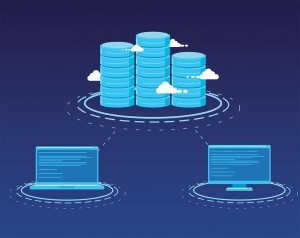Lift and Shift Migration to the Cloud

Lift and shift is an approach, one among many, for migrating the apps to the cloud. It means moving an application and its related data to a cloud platform without restructuring the app.
There is no one-size-fits-all transition for moving an application from users on-premises data center to the cloud. But there are known core migration paths; many consider lift and shift is one of them. It is a way for organizations to safeguard their investments in business workflow, logic, and data trapped in on-premises hardware.
The lift-and-shift approach opens pathways to IT modernization by moving to an open and more extensible architecture in the cloud. Organizations consider lift and shift for solid business reasons, including minimized costs and improved performance and resiliency.
WHEN IS THE LIFT AND SHIFT CLOUD-MIGRATION MODEL A GOOD FIT??
With the lift-and-shift approach, on-premises applications can move to the cloud without redesigning. But they cannot always take complete advantage of native-cloud features, so this may not be the most cost-effective migration path. According to the survey, Gartner estimates that by 2020, organizations lacking cost-optimization processes will average 40% overspend in the public cloud.
STRATAGEMS TO CONSIDER
Rehost : This is infrastructure as a service (IaaS), or lift and shift. The user rehost his/her application in another hardware environment without changing the applications architecture. Migration is fast and comparatively low-priced, but ongoing operation can be costly because the user is not leveraging cloud efficiencies.
Refactor : Refactor is also known as platform as a service (PaaS), the user run his/her applications on a cloud provider’s infrastructure. Developers can reuse languages, frameworks, and containers leveraging code that’s strategic to the company.
Revise : Firstly, the user support legacy-modernization requirements by modifying or extending the existing code; then take the rehost or refactor route to the cloud. This means the user can leverage the cloud characteristics of their provider’s infrastructure but not without upfront development cost.
Rebuild : The user throws out the code for an existing app and re-architect it. The benefit is access to inventive features in the provider’s platform that improve developer’s productivity. The price the user pay is either lock-in or abandoning the application assets if the situation becomes unacceptable.
Replace : Discard the existing application set and adopt commercial software as a service (SaaS). When requirements for a business function change rapidly, this approach eludes the time and investment of mobilizing a development team. But there might be some issues such as inconsistent data semantics, difficult data-access, and vendor lock-in.

